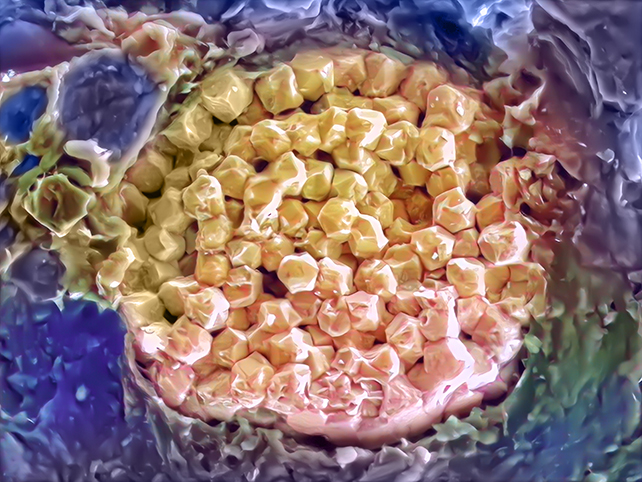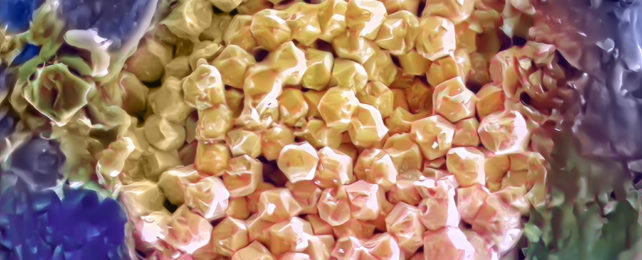Scientists have found small pockets of seawater that have been trapped in rock for some 390 million years, a discovery that could significantly deepen our understanding of how oceans evolve and adapt to changing climate conditions.
The tiny amounts of liquid represent waters once populated by great armored fishes, ammonoids, giant sea scorpions, and trilobites.
Though not the oldest water sample on record, it is thought that these are the smallest remnants of ancient seas ever to be studied.
The hidden seawater was preserved in iron pyrite rocks in upstate New York, spotted by a research team investigating an important environmental issue: toxic arsenic leaching out of rocks.
At the same time, they noticed tiny defects in the form of spherical clusters of tiny pyrite crystals, known as framboids.

"We looked at these samples through the electron microscope first, and we saw these kind of mini bubbles or mini features within the framboid and wondered what they were," says geochemist Sandra Taylor, from the US Department of Energy Pacific Northwest National Laboratory (PNNL) in Washington State.
A combination of atom probe tomography and mass spectrometry techniques were used, deploying finely controlled laser pulses and beams of electrons to ionize atoms and confirm that the water trapped in the rocks was indeed salt water and matched the chemical profile of the ancient inland sea of the area.
From the minuscule size of the framboid deposits, less than 10 micrometers in size, the researchers could also infer the conditions under which they formed.
During the Middle Devonian period, almost 400 million years ago, this sea would have stretched from where Michigan is today to Ontario in Canada. Its reef would have rivaled the Great Barrier Reef in Australia in size, with trilobite-like creatures and the earliest types of horseshoe crabs making their underwater home here.

It's not uncommon for minerals and gems to harbor trapped liquids, but they can rarely be analyzed on a nanoscale like this. Rock salt or halite is usually required for discoveries of this type, but the scientists have now demonstrated a similar technique for pyrite, which is much more abundant.
"Salt deposits from trapped seawater are relatively rare in the rock record, so there are millions of years missing in the records and what we currently know is based on a few localities where there is halite found," says geochemist Daniel Gregory, from the University of Toronto in Canada.
Ever so slowly, the climate changed and dried up the inland sea, the fossils trapped within its sediment becoming the pyrite rocks sampled in this research hundreds of millions of years later.
Through the continuing study of these mineral deposits, the researchers intend to learn more about how the ocean handled rising temperatures, which should give an indication of how a similar scenario might play out today.
The researchers also plan to use the techniques to better understand how hydrogen interacts with rocks. Safely storing and retrieving large amounts of hydrogen from underground reservoirs is a strategy being explored so that the element can be used low-carbon fuel source.
"By using this technique we could figure out what's going on at the atomic level, which would then help in evaluating and optimizing strategies for hydrogen storage in the subsurface," Taylor says.
The research has been published in Earth and Planetary Science Letters.
